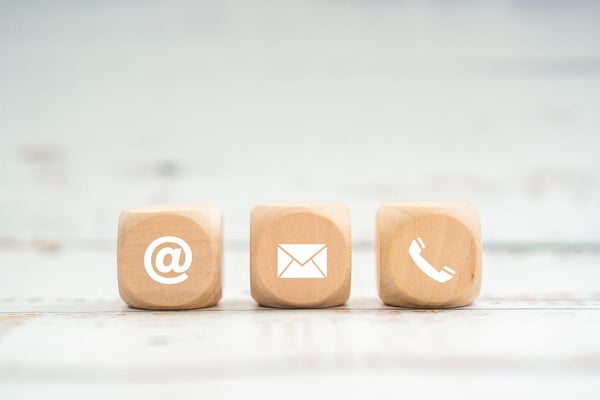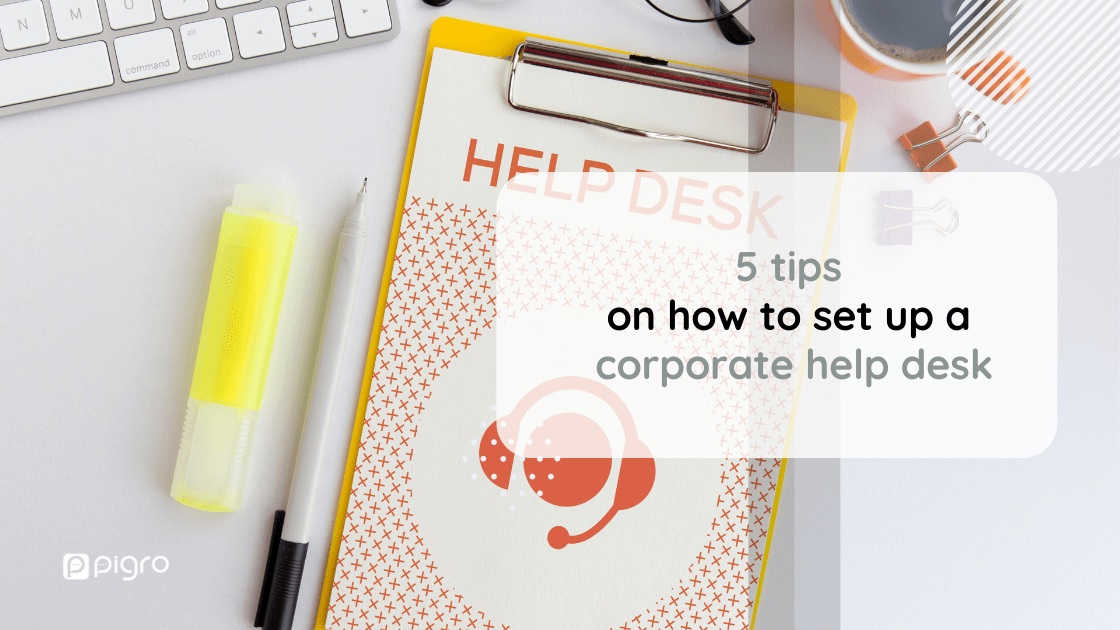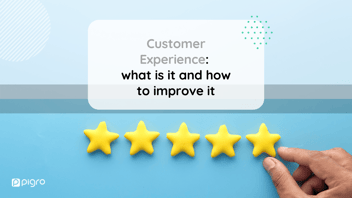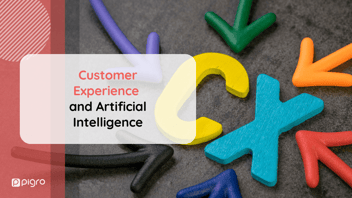Some studies have shown that focusing on loyalty and customer retention leads to business success. According to research conducted by Frederick Reichheld of Bain & Company, for example, increasing customer retention rates by 5% increases profits by 25% to 95%. That's why it's important to define a customer service strategy that can make the customer experience a true shopping experience. In this article, we will discover how to improve the performance and results of the "Help Desk", the main channel of communication with clients.
What is a Help desk and what it does
Before analyzing all the aspects that need to be taken into account to implement the strategy behind the operation of the help desk, let's start with the definition and the objectives that this business area sets itself.
The Help Desk is a business service to support the customer before, during, and after the purchasing process. It deals with providing assistance, giving indications related to procedures and products, and helping the user with any problem he may encounter in his customer journey.
While the Customer Care service is more generic support, the Help Desk, instead, has a more specific role and is called to respond to technical needs, for which the presence of specialized operators is required.
The Help Desk is of two types:
-
first level: it is related to customer assistance for those problems that, for their resolution, require little time. If the problem is clear and easily solvable, the necessary information for the customer is provided directly by the operator or agent. If, on the other hand, this requires more specific skills, the customer service agent takes charge of the request, identifies the offices responsible for complying with it, and turns the file over to them. They will analyze the request, consult the necessary material and contact the client again to provide him with information on how to solve the problem presented;
-
second level: unlike the first level, the second one tries to solve the problem in real time, directly in line with the customer, thus guaranteeing a reduction in resolution times. If, however, a more in-depth analysis is required, a ticket is opened and transferred to the technical staff.
The first level of the Customer Help Desk, therefore, deals with a first skimming of the requests and a redirection of them to the competent offices. The second one provides a more specialized and detailed service on the precise request of the customer, as this does not fall within the standardized procedures and requires the presence of technical staff.

How to organize a help desk
Having an efficient help desk department brings numerous benefits to the company such as, for example, increased customer satisfaction, customer loyalty, and increased sales.
But how to organize the help desk area efficiently?
Let's see some tips on how to improve this strategy:
-
Train customer service operators: as we have already mentioned, in some cases it is the customer service operators who resolve the user/customer's problem directly, thus avoiding the opening of tickets and the handover to another office. This allows for avoiding losses of time, fundamental for the operator, that it will be able to return to dedicate itself to the other demands, and for the customer. The latter, in fact, when he turns to customer service is for the presence of a problem that does not allow him to use the product or service purchased. If the resolution times are quick, the user will perceive in a limited way the discomfort related to the problem. If, on the other hand, the timeframe is long, the client's dissatisfaction will increase and they may choose to use another company for future purchases.
-
This is a good way to improve customer relations: when dealing with clients, it is essential that they feel heard. This is a good way to make sure that the client is understood rightly. A good understanding of the problem also minimizes errors in taking over requests, eliminating wasted employee time. For this to happen, the practitioner must take an empathetic attitude with the client, showing that they understand their discomfort and reassuring them about the speed of resolution.
-
Asking for feedback: how do you find out what the weaknesses of your company's Help Desk are? By asking the people who use it directly: the customer. Customer feedback is the starting point for devising or modifying the customer service strategy; this is why it is necessary to constantly ask for an opinion on the service offered, thus being able to correct critical points as quickly as possible. Many companies decide not to ask for feedback directly from the customer for fear of negative evaluations, but this is precisely the objective of research: to discover what is decreasing customer satisfaction and to change it before it can lead the user to abandon the purchase. There are several ways to encourage customers to do this, such as creating a service evaluation form on the company's website, sending email surveys, or asking for feedback following the resolution of a ticket. This will allow you to uncover not only weaknesses but also the needs of your customers, what additional services they would need, what expectations they have of the product or company, etc.
-
Use specific tools: training operators is not enough to ensure an efficient help desk. For this to happen, the company needs to invest in customer service-specific tools, such as customer engagement platforms or knowledge management software that help employees quickly find the information they need to solve customer problems. But the use of specific tools doesn't always help improve performance, as is the case with automation. In fact, automation is often used to reduce resolution times, but sacrifices the quality of the operator/customer relationship. For this reason, every tool must be included in the process, focusing on all components of the customer journey and not just the "speed" factor.
-
Establish objectives and measure performance: for customer service, the main objective is to close the largest number of tickets in the shortest time. As we have already seen, in fact, a Help Desk that is slow in solving problems will lead to a decrease in customer loyalty and trust in the company. For this reason, it is necessary to always have updated data: the more data you have available, the easier it will be to identify problems of work management or division of work.
Here are some KPIs to always have under control as indicators of the progress of the strategy:
-
Average question processing time
-
Daily tickets resolved (and time to resolve them)
-
Number of customer complaints
-
Customer feedback
-
Percentage of tasks not completed.
Choosing the right channels
Creating a strategy for organizing the help desk is the basis for efficient customer service, in which all possible points of contact with customers must be defined and structured.
For this, it is necessary to carefully choose how (and in how many ways) customers can contact the company. Among these ways, there are also social networks, which are increasingly used to make operator/user communication easier. This certainly makes contact more immediate, but at what price? Having so many channels through which to be contacted risks dispersing resources, slowing down the assistance process.
A solution can be to define a small number, or even a single point of access, where all requests are channelled, and communicate this adequately on all platforms, to address customers clearly, without running the risk of someone not being able to contact customer service for a problem or to leave feedback.
Learn more:
Do you want more information? Contact Pigro Team!



